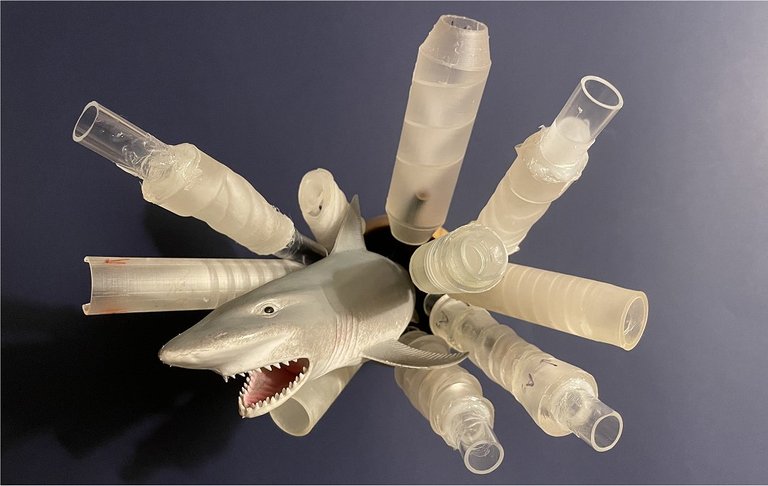Technology
Bomb inspired by shark intestine surpasses Tesla valve
When it comes to propelling a fluid, the paddles do an essential job: From pumping blood through the hearts, accelerating the engines or simply lifting the water up to our water tanks, whatever their mode of impulsion, the paddles help the fluid move. flow in one direction. Without them, keeping liquids going in the right direction would be problematic.
#newsonleo #technology #invention

Now, engineers have discovered a new way to not only send liquid through a channel, but to only send it in the desired direction, preventing it from returning. Although "diodes" for fluids already existed, until now these mechanisms only worked on the microscale - the technical name for this mechanism is unidirectional fluid flow, or flow asymmetry.
To create a large system to make fluids flow in just one direction, Ido Levin and colleagues at the University of Washington took inspiration from the intestines of sharks, which have structures that resemble Archimedes' screw, except that they are flexible and highly deformable.
The human intestines are essentially a hollow tube. But sharks and rays have intestines with a network of spirals surrounding an internal passage. In a 2021 publication, another team proposed that this unique structure promoted the unidirectional flow of fluids through the digestive tracts of sharks and rays, without relying on paddles, fins, flaps or any other mechanisms to prevent backflow.
Levin then built on this proposal and began developing his own biomimetic asymmetric flow mechanism.
Equalizing the Tesla Valve
"Flow asymmetry in a pipe without moving vanes has tremendous technological potential, but the mechanism was intriguing," confessed Levin. "It was unclear which parts of the shark's intestinal structure contributed to the asymmetry and which only served to increase the surface area for nutrient absorption."
To answer these questions, the team used a 3D printer to build a series of biomimetic tubes, all with internal helices inspired by shark intestines. They varied the geometric parameters between these tubes, such as the propeller inclination angle and the number of blades.
Despite being printed using rigid materials, some prototypes maintained a strong preference for unidirectional flow. Then, by further tuning the geometric parameters and improving these most promising designs, the researchers were able to increase the flow asymmetry until it rivaled the designs of famous inventor Nikola Tesla, who more than a century ago patented the Tesla valve, a device unidirectional fluid flow with no moving parts.
But the team wanted more: The next step was to use so-called "deformable structures", which are made of more flexible materials, more similar to the structures of shark intestines - if rigid structures could already match Tesla's valve, perhaps it would be possible overcome it.
The team then printed a second series of prototypes made from a softer polymer, which is commercially available. This new series, using flexible tubes, better imitates shark intestines thanks to their deformability and internal propellers. And, as expected, the new prototypes performed at least seven times better compared to all previously measured Tesla valves.
"You can't beat Nikola Tesla every day!" celebrated Levin.
And it can be improved: "Real [shark] intestines are still about 100 times softer than our soft material, so there is a lot of room for improvement," said researcher Naroa Sadaba, co-author of the work.